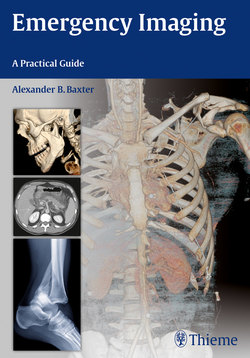Читать книгу Emergency Imaging - Alexander B. Baxter - Страница 69
На сайте Литреса книга снята с продажи.
Оглавление55
2Brain
geneous, low in attenuation, and diusely swollen, with sulcal and cisternal eace-ment. Because the meninges are supplied by branches of the external carotid artery (ECA), which are usually not compromised, they will often appear dense against adja-cent low-attenuation brain and can simu-late diuse subarachnoid hemorrhage.
The basal ganglia, cerebral cortex,thalami, cerebellum, caudate nuclei, andhippocampi are most sensitive to hy-poxic ischemic injury, and patients whosuer less severe hypoxia may show low-attenuation CT changes or high-signal T2-weighted MRI changes in these structures(Fig. 2.22).
◆Anoxic Injury
Anoxic (also known as hypoxic-ischemic) cerebral injury results from global lack of oxygen delivery to the brain for an ex-tended period. It is most frequently the consequence of cardiopulmonary arrest, respiratory failure, carbon monoxide poi-soning, near-drowning, or asphyxia. Pa-tients typically present to the Emergency Department with a history of prolonged resuscitation eorts.
CT findings in adults with prolonged anoxia, hypoxia, or global hypoperfusion include progressive loss of normal gray-white matter dierentiation, generalized cytotoxic edema, and sulcal and ventricu-lar eacement. The brain appears homo-
Fig. 2.22a–fa–d Anoxic injury following prolonged cardiorespiratory arrest. (a,b) Initial NCCT. Diminished gray-white dierentiation with normal ventricles and sulci. (c,d) Follow-up NCCT 24 hours later. Progressive decrease in parenchymal attenuation with complete perimesencephalic cisternal and convexity sulcal eacement. Both lateral ventricles are compressed. Increased apparent density within the subarachnoid space reects maintained meningeal perfusion rather than true subarachnoid hemorrhage.
e,f Less severe anoxic injury following cardiac arrest and resucutation. Immediate post-arrest CT is nor-mal. Four days later, low attenuation changes are limited to the caudate nuclei and lateral putamina.
